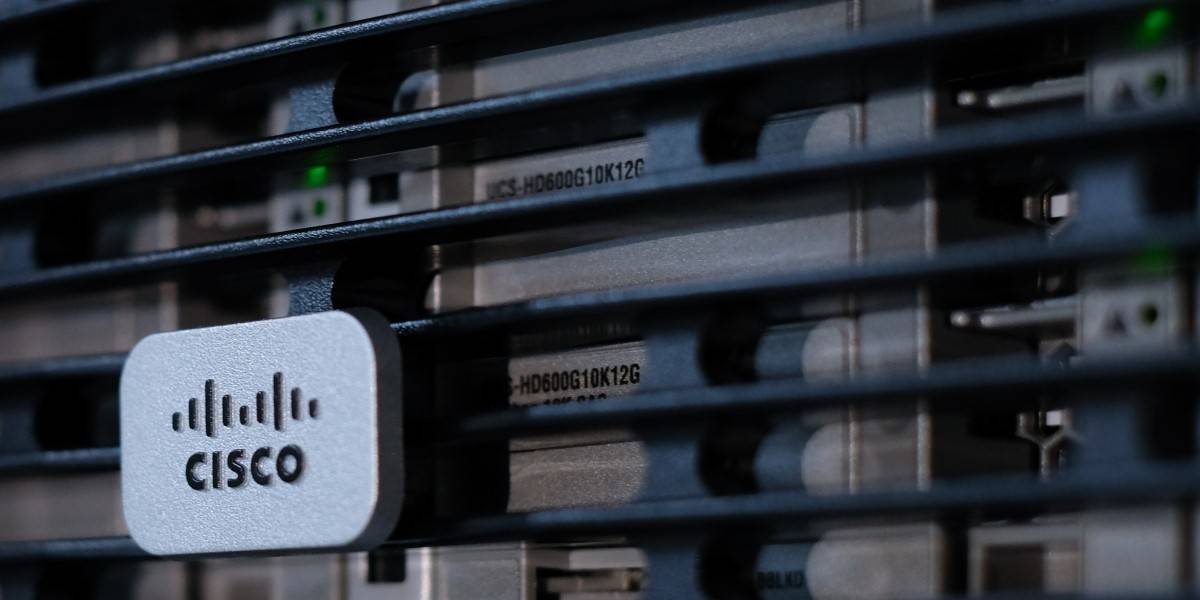Cisco Close To Clearing The Backlog Of Hardware Orders A Certain Virus Caused

Cisco has almost cleared the massive backlog of orders it racked up after COVID-19 kicked holes in its supply chain.
Speaking on the networking giant's Q4 2023 earnings call on Wednesday, CEO Chuck Robbins told investors Cisco "ended the year as we expected with roughly double our normal backlog levels. But that excess backlog will work down in the first half of fiscal '24 with the majority of that being worked off in Q1."
Cisco's already in the first quarter of its fiscal 2024 as you read this story. Switchzilla's financial year ended on July 29, so long-suffering customers who've been unable to get their hands on hardware appear to be weeks away from some relief.
And some of those customers suffered for many months – especially those who needed Cisco's higher end and/or specialist kit. Those products are made in smallish quantities, and Cisco struggled to get its orders for components to the front of the queue with suppliers, who were being offered fistfuls of cash during the disruptions to global trade experienced over the last three years. Long lockdowns and city-specific outbreaks in China complicated matters by straining links in the supply chain, even as other parts of the world returned to something approaching normal.
The backlogs didn't only hurt Cisco once by slowing hardware purchases. Customers who didn't receive hardware didn't pay for the software needed to run and/or manage it, leaving the network specialist unable to collect a load of potential much-needed revenue.
Those worries are now all-but-behind Cisco, which posted strong results.
Q4 revenue reached $15.2 billion, up 16 percent year-over-year. Net income of $4 billion was a 41 percent improvement on the $2.8 billion from Q4 2022.
Full year revenue of $57 billion was up eleven percent, with net income of $12.6 billion an improvement of $800 million, or seven percent, on last year's result.
- Cisco buys SamKnows to give ThousandEyes a look at millions of endpoints
- Cisco challenges Broadcom, Nvidia with 51.2Tbit switch ASIC of its own
- Cisco promises to unify its net management silos in the next three to five years
- Buckle up for meetings on the road as Cisco brings Webex to Audi autos
CFO Scott Herren was pleased that more money is coming from software and recurring sources such as subscriptions. Eighty-four percent of Cisco's $17 billion annual software revenue was subscription-based, and software revenue rose 12 percent. Total subscription revenue reached $24.6 billion, an increase of ten percent.
Herren and Robbins styled those results as evidence that the business's transformation is on track.
Collaboration services had a tough quarter, with revenue down 12 percent. Falling sales of collaboration devices and meetings were blamed for the drop, but growth in cloud calling and cloud contact centers prevented a worse result.
Cisco plans to buttress that business by selling suites of products and services – an approach it will also bring to its security portfolio.
Robbins was asked about Cisco's success – or otherwise – with hyperscale and AI customers. He admitted Cisco missed the market the first time around, but is now improving its success rate. He added that as hyperscalers experiment with AI they're most likely to use InfiniBand networks, but Cisco is hopeful such customers will also buy ethernet.
When asked about 400G and 800G ethernet, Robbins said shipments of the slower standard indicate "we've had a great deal of success and it's been growing quite significantly." As for 800G ethernet in particular, he said it's a tech with which Cisco has "engaged" with some customers, even though demand is not huge.
"I think that we're just in the game at the right time as opposed to where we started," he said. "And so I think from now on, it just gives us an opportunity to be there from the beginning as opposed to trying to catch up."
Herren offered investors FY 2024 guidance, with Q1 revenue expected to fall between $14.5 billion to $14.7 billion, and full year revenue to be in the range of $57 billion to $58.2 billion.
Those numbers are not a huge improvement on recent performance, but Robbins characterized the Q4 result as so good it surprised even Cisco's own sales team. "They nailed month one, they nailed month two, and they exceeded month three by several hundred million dollars," he beamed, adding "It was one of those quarters that they actually over-performed what they thought they would do at the beginning of the quarter, which is a positive sign."
"But again, it's one quarter," he cautioned, after pointing out that "we're obviously dealing in a world that has a lot of dynamics right now."
In after-the-bell trading Cisco's shares nonetheless popped to over $54 apiece, after starting the day at $53.08. ®
From Chip War To Cloud War: The Next Frontier In Global Tech Competition
The global chip war, characterized by intense competition among nations and corporations for supremacy in semiconductor ... Read more
The High Stakes Of Tech Regulation: Security Risks And Market Dynamics
The influence of tech giants in the global economy continues to grow, raising crucial questions about how to balance sec... Read more
The Tyranny Of Instagram Interiors: Why It's Time To Break Free From Algorithm-Driven Aesthetics
Instagram has become a dominant force in shaping interior design trends, offering a seemingly endless stream of inspirat... Read more
The Data Crunch In AI: Strategies For Sustainability
Exploring solutions to the imminent exhaustion of internet data for AI training.As the artificial intelligence (AI) indu... Read more
Google Abandons Four-Year Effort To Remove Cookies From Chrome Browser
After four years of dedicated effort, Google has decided to abandon its plan to remove third-party cookies from its Chro... Read more
LinkedIn Embraces AI And Gamification To Drive User Engagement And Revenue
In an effort to tackle slowing revenue growth and enhance user engagement, LinkedIn is turning to artificial intelligenc... Read more

